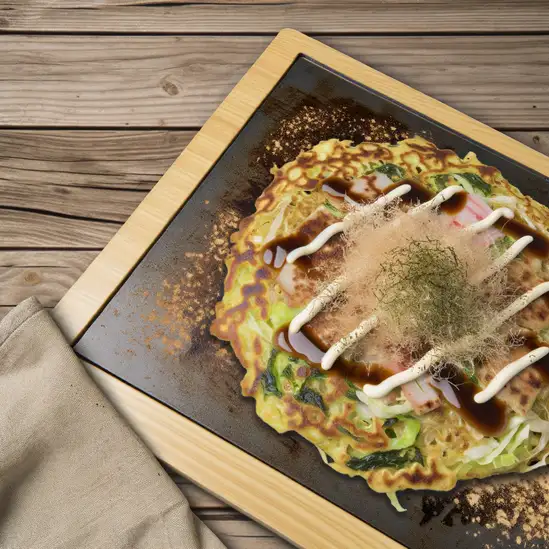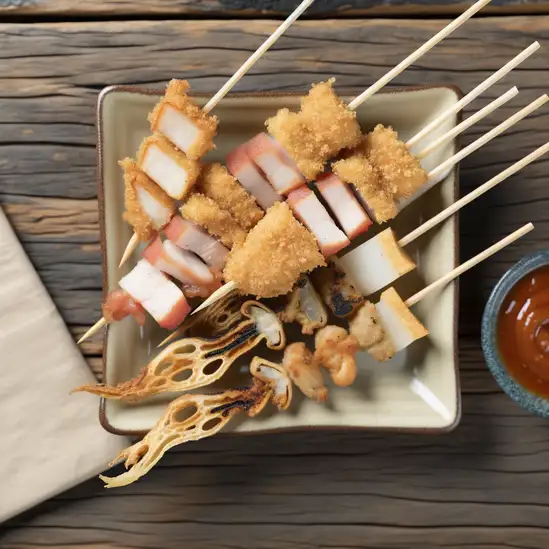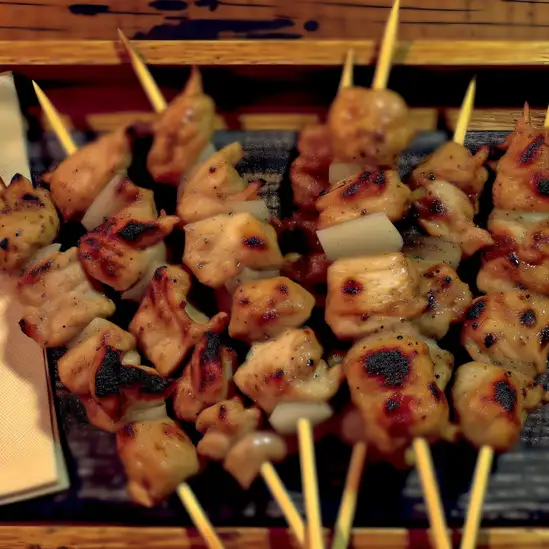


Imagine stepping into a city that buzzes with an infectious energy,where neon lights splash vibrant colors across the night sky and the air hums with laughter and chatter. That’s Osaka for you—a place that feels alive in the most welcoming way. It’s not just a city; it’s a warm,spirited friend who invites you to dive into its lively streets,where every corner tells a story. The scent of sizzling takoyaki and okonomiyaki wafts through the air,tempting you to stop and savor the rich,comforting flavors that define Osaka’s food culture. Walking through Dotonbori,you’ll hear the rhythmic clatter of chefs flipping pancakes on hot griddles,mixed with the playful calls of street vendors. The city’s character shines in its blend of old and new—ancient castles stand proudly near bustling shopping arcades,and traditional theaters share space with quirky,modern cafes. People here are famously friendly and down-to-earth,always ready with a smile or a helpful tip,making you feel instantly at home. What makes Osaka truly special is its unapologetic joyfulness. It’s a city that celebrates life through its food,festivals,and everyday moments. Whether you’re savoring a bowl of rich ramen,exploring vibrant markets,or simply soaking in the neon-lit riverbanks,Osaka wraps you in a warm embrace that lingers long after you leave. Trust me,once you experience its spirited charm,you’ll find yourself dreaming of coming back.
The information on this page is currently being reviewed by Tripkliq and should be used as a guide only
Eng word: Hello
Eng pronunciation: Konnichiwa
Local language: こんにちは
Eng word: Goodbye
Eng pronunciation: Sayōnara
Local language: さようなら
Eng word: Thank you
Eng pronunciation: Arigatō
Local language: ありがとう
Eng word: How much
Eng pronunciation: Ikura
Local language: いくら
Eng word: Toilet
Eng pronunciation: Toire
Local language: トイレ
Eng word: Help me
Eng pronunciation: Tasukete
Local language: 助けて
Eng word: Yes
Eng pronunciation: Hai
Local language: はい
Eng word: No
Eng pronunciation: Iie
Local language: いいえ
Eng word: Excuse me
Eng pronunciation: Sumimasen
Local language: すみません
The name 'Osaka' means 'large hill' or 'large slope' in Japanese. It is believed that the name originated from the geographical characteristics of the area during ancient times.
Osaka Castle is one of Japan's most famous landmarks. It was built by Toyotomi Hideyoshi in 1583 as a display of power and to unite Japan during the Azuchi-Momoyama period. The castle has been destroyed and rebuilt several times throughout history.
Since the Edo period (1603–1868), Osaka has been a major economic center of Japan. It was historically known as the 'nation's kitchen' because of its crucial role in rice trading and its vibrant merchant culture.
Osaka is known as the birthplace of Bunraku, traditional Japanese puppet theater, which dates back to the 17th century. This form of narrative storytelling is accompanied by a shamisen and has been designated a UNESCO Intangible Cultural Heritage.
The Osaka Mint Bureau is famous for its cherry blossom passage, which opens to the public for one week each April. It features more than 100 varieties of cherry blossoms and attracts visitors from around the world.
Osaka has a long history with sumo wrestling, hosting annual tournaments that draw crowds from all over. The city's involvement with sumo dates back to the Edo period, emphasizing its significance in Japan's sporting culture.
Osakajo Hall, situated within the Osaka Castle Park, is a renowned concert hall opened in 1983. It commemorates the 400th anniversary of Osaka Castle and hosts a wide range of events, showcasing the city's cultural diversity.
Osaka is the birthplace of instant ramen, invented by Momofuku Ando in 1958. This innovation revolutionized the way people around the world eat and enjoy this quick, affordable meal.
Amerikamura, often shortened to 'Amemura,' is a retail and entertainment area in Osaka known for its American-themed shops and restaurants. It reflects the post-war influence of American culture and is a popular spot among the youth.
In Osaka, the most common Power Adaptor is Type A, Type B.



A savory pancake made with a batter of flour, eggs, shredded cabbage, and various ingredients such as pork, seafood, or vegetables, cooked on a griddle and topped with okonomiyaki sauce, mayonnaise, bonito flakes, and seaweed powder.

A popular street food in Osaka, takoyaki are savory octopus balls made with a batter of flour, eggs, and dashi broth, filled with diced octopus, pickled ginger, and green onions, and topped with takoyaki sauce, mayonnaise, bonito flakes, and seaweed powder.

Deep-fried skewers of meat, seafood, and vegetables coated in breadcrumbs, served with a tangy dipping sauce. Popular kushikatsu ingredients include pork, shrimp, lotus root, and mushrooms.

Grilled skewers of bite-sized pieces of chicken, seasoned with salt or a sweet soy sauce marinade. Yakitori can be found at izakayas (Japanese pubs) and street food stalls throughout Osaka.
If you ever find yourself wandering through Japan,Nara is one of those places that gently pulls you into a slower,more thoughtful rhythm. The moment you step into its sprawling parks,you’re greeted by the soft rustle of leaves and the curious gaze of deer that roam freely,almost like they’re the city’s unofficial ambassadors. There’s a peacefulness here that feels both ancient and alive,as if the past and present are having a quiet conversation. You can almost hear the faint echo of temple bells mingling with birdsong,creating a soundtrack that soothes the soul.
Walking through Nara’s streets,you’ll catch the scent of incense drifting from centuries-old temples,mingling with the earthy aroma of moss-covered stone lanterns. The city’s character is deeply tied to its history — from the majestic Todai-ji with its colossal Buddha statue to the charming,narrow lanes lined with traditional wooden shops selling delicate sweets and handcrafted souvenirs. It’s a place where culture isn’t just preserved; it’s lived and breathed every day.
And then there’s the food — simple,comforting,and utterly satisfying. Imagine savoring warm mochi or slurping a bowl of rich,savory ramen in a cozy local spot,surrounded by friendly chatter and the clinking of chopsticks. Nara invites you to slow down,soak in the beauty,and connect with a Japan that feels genuine and heartfelt. Trust me,it’s a city that stays with you long after you’ve left.
If you wander into Kobe,you’ll immediately notice a unique blend of old-world charm and modern energy humming through the air. The city sits gracefully between the shimmering waters of the harbor and the lush,rolling Rokko Mountains,giving it this incredible sense of openness and calm. As you stroll along the waterfront,the salty breeze carries the faint scent of fresh seafood mingled with the rich aroma of sizzling Kobe beef grilling nearby—trust me,the taste lives up to the hype. The streets buzz softly with a mix of locals chatting in cozy cafes and the occasional clatter of trams,creating a rhythm that feels both lively and laid-back.
Kobe’s character is shaped by its history as a port city open to the world,which means you’ll find a fascinating cultural mix here. From the European-style architecture in Kitano to the vibrant Chinatown where lanterns glow warmly at night,every corner tells a story. The city’s art scene is quietly thriving too,with galleries and street art popping up in unexpected places,inviting you to pause and explore.
What I love most is how Kobe balances sophistication with warmth. Whether you’re savoring a cup of hand-drip coffee in a tucked-away café or hiking up to a viewpoint to watch the city lights twinkle below,there’s a gentle invitation to slow down and soak it all in. It’s a place that feels welcoming,like a friend who’s excited to share their favorite spots and stories with you.
Hiroshima has this incredible mix of quiet reflection and vibrant life that stays with you long after you leave. When you walk through the city,there’s a gentle hum of everyday moments—people chatting over steaming bowls of okonomiyaki,the city’s famous savory pancake,or the soft rustle of leaves in Shukkeien Garden. The air carries a subtle blend of sea breeze and fresh greenery,grounding you in a place that’s both peaceful and full of stories.
What really sets Hiroshima apart is its spirit. The Peace Memorial Park is deeply moving,but it’s not just about history—it’s about hope and resilience. You can feel the city’s heartbeat in the way locals honor the past while embracing the future. Nearby,the bustling Hondori shopping street buzzes with energy,where neon signs flicker and laughter spills from cozy cafes and lively izakayas.
Don’t miss the chance to take a ferry to Miyajima Island,where the iconic floating torii gate seems to float on the water at high tide. The island’s serene forests and friendly deer add a magical touch to your visit. Hiroshima’s warmth isn’t just in its sights but in its people—their kindness and quiet strength make you feel like you’re part of something meaningful. It’s a city that invites you to slow down,listen,and soak in a unique blend of history,culture,and everyday beauty.
Seoul feels like a city that’s constantly humming with life,where ancient traditions and cutting-edge modernity dance side by side. Imagine wandering through narrow alleys lined with hanok houses,their wooden beams glowing softly in the afternoon sun,then stepping out into bustling streets filled with neon signs and the irresistible aroma of sizzling street food. The city’s energy is contagious—there’s a rhythm to it,from the chatter of locals bargaining at markets to the steady beat of K-pop spilling out of cafes.
What really sticks with you is how Seoul engages all your senses. You’ll hear the clatter of chopsticks and laughter at a late-night pojangmacha (street food tent),smell the sweet,smoky scent of grilled meat mingling with spicy kimchi,and feel the crisp breeze along the Han River as joggers and families enjoy the parks. The city’s layers reveal themselves slowly—ancient palaces tucked between skyscrapers,tranquil temples offering quiet moments amid the urban rush.
Seoul’s character is a blend of warmth and innovation. People are friendly and proud of their culture,eager to share stories over a cup of rich,bitter coffee or a bowl of comforting bibimbap. Whether you’re exploring art galleries in trendy neighborhoods like Hongdae or soaking in the panoramic views from Namsan Tower,there’s a genuine pulse here that invites you to dive deeper,to taste,listen,and truly feel the city’s soul.
Imagine stepping into a city where the buzz of scooters blends with the inviting aroma of street food sizzling on every corner—that’s Taipei for you. It’s a place where ancient temples nestle beside gleaming skyscrapers,and night markets pulse with life long after the sun dips below the horizon. Walking through Taipei,you feel this vibrant energy that’s both electric and warmly familiar,like a city that’s constantly awake but never rushed.
The streets are alive with colors and sounds:vendors calling out their specials,the clatter of mahjong tiles in cozy tea houses,and the sweet scent of bubble tea mingling with the earthy fragrance of freshly steamed dumplings. Taipei’s culture is a beautiful blend of tradition and modernity,where you can explore centuries-old heritage at Longshan Temple,then hop on a high-speed train to the top of Taipei 101 for a jaw-dropping cityscape view.
What really sticks with you is the genuine kindness of the people—locals who are eager to share their favorite night market stalls or recommend a quiet café tucked away in a leafy alley. Whether you’re savoring a bowl of beef noodle soup or wandering through the lush trails of Elephant Mountain,Taipei feels like a city that invites you to slow down,explore deeply,and savor every moment.
Bangkok is one of those cities that grabs you the moment you step out into its bustling streets. There’s this electric energy in the air—a mix of honking tuk-tuks,sizzling street food stalls,and the chatter of locals weaving through markets. The city feels alive,like it’s constantly moving and breathing,yet somehow it balances this chaos with moments of serene beauty,like the golden spires of temples catching the afternoon sun or quiet canals reflecting the sky.
Walking through Bangkok,you’ll be hit by a whirlwind of scents:fragrant jasmine from flower vendors,the sharp tang of lemongrass and chili from street carts,and the sweet aroma of mango sticky rice tempting you at every corner. The colors are just as vivid—neon signs flicker alongside traditional wooden shophouses,and monks in saffron robes glide past modern skyscrapers. It’s a city where old and new dance together effortlessly.
What really makes Bangkok special is its warmth and openness. The people here have a genuine kindness that shines through,whether you’re bargaining at Chatuchak Market or sharing a laugh over a bowl of spicy boat noodles. The culture is rich and layered,from the intricate rituals at Wat Pho to the lively festivals that light up the streets. Visiting Bangkok feels like stepping into a story that’s still unfolding,full of surprises and moments that stay with you long after you leave.
Tourists are lured into bars or nightclubs with promises of cheap drinks or no cover charge, only to be presented with an exorbitant bill at the end of the night.
Tourists may be sold counterfeit goods, such as branded clothing or electronics, at prices that seem too good to be true.
Individuals dressed as monks approach tourists, offering 'free' blessings or trinkets, then demand a donation or payment.
Tourists are targeted in crowded areas, such as train stations and popular tourist spots, by pickpockets who take advantage of distractions.
Some restaurants may not display prices clearly and then charge tourists significantly more than locals for the same dishes.
Tourists are invited to participate in street gambling games, which are rigged to ensure they lose money.
Some taxi drivers may take longer routes or charge extra fees to tourists who are unfamiliar with the area.
Japan has very strict drug laws, and this includes Osaka. The possession, use, or trafficking of illegal drugs is severely punished, with potential penalties including long prison sentences and heavy fines. Even some over-the-counter medications that are legal in other countries may be restricted or prohibited in Japan. Tourists should ensure they are not carrying any substances that are illegal in Japan and should consult with Japanese customs or their embassy if they have any doubts.
In Osaka, smoking is generally prohibited in many public places, including streets, parks, and public transportation areas. Designated smoking areas are available and should be used. Many restaurants and bars have separate smoking and non-smoking sections, but it's always best to check for specific rules at each establishment. Violating smoking regulations can result in fines.
Vaping is subject to similar regulations as smoking in Osaka. It is prohibited in many public areas, and users should look for designated vaping areas. The same rules that apply to smoking in restaurants, bars, and other establishments typically apply to vaping as well. Always check for specific rules at each location.
What are other people saying about Osaka?
Recent Social posts about Osaka
There is nothing to show you for now.